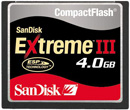
Some things you just have to learn by experience. In this week's show, I share tips from working pros who can't afford to miss a shot. These gems are invaluable for all photographers, because let's face it, none of us want to miss an opportunity to make a great photograph.
Also, I want to note that this is the 50th Digital Story podcast. So fire up your iPod, put in those earbuds, and check out this sage pro advice I have to share.
Listen to the Podcast
Now that I've piqued your curiosity, it's time to listen to today's audio show titled, "Inside Pro Tips." You can download the podcast here (30 minutes).
See It in Person
If you're in Northern California on the weekend of October 7, stop by the Macintosh Computer Expo and sit in on my iPhoto 6 Tips and Tricks session. It's free, and I'll show you this tip plus lots of other cool iPhoto goodies. For those who really want to dig into some shooting techniques, stick around another day and sign up for my Digital Photography Made Amazing half day workshop on Oct. 8. But sign up early because seating is limited.
Technorati Tags: digital photography, podcast, The Digital Story












Please upload to itunes for us as it is not there.....thanks.
Hi Glenn, This podcast is in iTunes now for subscribers. Just hit the refresh button in your Podcasts area if the show isn't already there. If you're not a Digital Story iTunes subscriber (ack!), then this show will appear on The Digital Story page later tonight or tomorrow morning. This is all controlled by iTunes. I syndicate the podcast when I publish it, then each of the aggregators (such as iTunes) handles it their own way from there. Thanks for listening in!
No need for "USA" on the memory card if you use the proper "international format". The country code for USA is "+1", so if you give a phone number in the format "+1 408 555 1212", it'll be recognized around the world as a phone number in "country code 1", which if not recognized immediately as USA, can certainly be looked up directly.
Actually, that's a great point Randal. And ultimately, adding the +1 is easier for the person trying to call. Thanks!
I put my URL on the cards too, the URL can be pulled up anywhere in the world to find me. Oh, and this is a huge pet peeve of mine...leaving anything behind.
I keep my memory cards in one place for every shoot...either on myself or on my belt or on my camera strap or in one place in the case. Setting objects down during a shoot is a dangerous habit.
Rocket blower for me too...never had any sensor dust that I could not remove with one...at least not yet.
Reflectors are great, and windshield reflectors that collapse and snap open work great on a budget. You can get ones that are gold on one side too for warmer reflections. If you are going in invest in real ones, get good ones and they last for many years.
Congrats on episode #50!
Back to circles...
I write my phone number on each of my cards, but when I'm doing wedding and event shots, I mostly keep my cards in a black sports pouch that I wear with me at every event. Not only does it help me get access to my cards when I need to change them, but it also insures that the cards stay with me.
I also read another useful tip about digital cards in Scott Kelby's new book. If you have several cards and you're doing a lot of shooting, you should keep them inside a special case instead of the plastic cases they come in when you purchase them. The tip here is that when you put them in a case, you can turn the cards on one side when they're full, say face down, and turn them another way when they're empty. That's a cool time saver to me.
Congrats on #50! Great podcast with lots of good information for pros, serious amateurs, and wannabes like me!!
Hey Bakari, thanks for the additional tip about using a card holder and turing the cards to indicate if they're full or not. And thanks to you Scott for the congrats on the 50th show. It seems like just yesterday that I began... :)
While this is an older podcast, I've only just listened to it and thought the tips were quite handy. One thing though, in relation to the story about the lady that lost her CompactFlash cards. You can take her tip of a name and phone number one step further by actually storing a text file on the card containing your name, phone number, country, e-mail and maybe even your website. This way, if anyone computer-savvy sees the card they'll find the text file on it and will be able to read it.